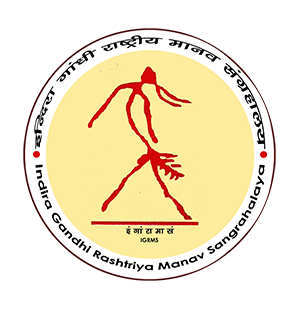आओनागा उत्पत्ति कथा
कलाकार: श्री चूबा, श्री टेमसू, श्री रॉगसेन, श्री मेरेन, श्री वाती, श्री पुर एवं श्री मेकेन
क्षेत्र: चोजूबा, फेक, नागालैण्ड
नागालैण्ड के टुएनसाँग जिले में एक पहाड़ी पर बसे गाँव ऐंगलीयेमटी में लोंगट्रोक नामक पाषाण स्मारक के अवशेष मिलते हैं। नागालैण्ड की प्रमुख जनजातियों में से एक आओ-नागा की मान्यता के अनुसार उनकी उत्पत्ति इसी पत्थर से हुई है। इस मिथकीय पाषाण स्मारक के सबसे मध्य में एक विशाल मातृ-शिला है जिसके मध्य में एक अण्डाकार छेद है। इस छिद्र में तीर के सिर के आकार की पितृ-शिला खड़ी है। लोक मान्यता के अनुसार मातृ-शिला- ‘उच्छा लोंग को घेरे हुए खड़े छः शिला स्तम्भों में से तीन लडके व तीन लड़कियों का जन्म हुआ। इनके परस्पर विवाह, से आओ नागा जनजाति के प्रथम तीन गोत्र-पोंगेन, लोंगकुमर तथा जमीर की उत्पत्ति हुई।
मिथक के अनुसार, आओ-नागा लोग अपने पैतृक गाँव छुगलीयेमटी को छोड़ ढीकू नदी पर बेंत का पुल निर्मित कर, नागालैण्ड के उत्तर पश्चिमी भाग में आकर बस गये थे। बल्कि इस जनजाति के नामकरण के पीछे शायद यही घटना है आओ’ का नागा भाषा में शाब्दिक अर्थ है जो छोड़कर चले आये।’
मिथकीय चेतना का हिस्सा होने के अलावा छँगलीयेमटी गाँव का तथा लोग-ट्रोक का आओ-नागा जनजाति के सामाजिक, राजनैतिक- ऐतिहासिक संदर्भ में भी बहुत महत्वपूर्ण स्थान है। यहाँ इस प्राचीन मिथकीय शिला समूह की प्रस्तर अनुकृति प्रदर्शित है।
THE ORIGIN OF THE AO-NAGAS
Artists: Shri Chuba, Shri Tmsu, Shri Rongsen, Shri Meren, Shri Wati, Shri Pur, Shri Meken Region: Chozuba, Phek, Nagaland
Situated on a hillock, the ancient village of Chungliyimti in Tuensang district of Nagaland has the legendary monument – The Longtrok. One of the major tribe of Nagaland, the Ao-nagas believe that they originated from this stone monument. It has a large mother stone with an oblong cavity into which is fixed a somewhat arrow head shaped father stone. Six stone pillars surround the uchcha long – the mother stone and represent the six children – sons and daughters who gave birth to the primary three clans of Ao Nagas viz., the Pongen, the Longkumer and the Jamir. Historically the Ao-nagas migrated from their ancestral village of chungliyimti by building a cane bridge across the Dhiku river and finally settling down in Soyim village of western Nagaland. Infect the name Ao of the tribe owes its origin to this event. Ao literally meaning those who went away.
Ao-nagas were the first of the Naga tribes of accept Christianity. This fact along with the absence of any written textual support are the reason why the mythical and historical memory of the tribe is completely shrouded.
However, Chungliyimti village and the longtrok remain important and integral part of any socio-political historical dialogue of the Ao-naga tribe. Exhibited here is the stone replica of that ancient mythical stone monument.



